Training outside vs inside: the pros and cons of the annual debate
In her former life as a pro cyclist, Emma Silversides avoided indoor training like the plague, but she concedes that, for those balancing a day job and family commitments the turbo trainer is often the most effective tool
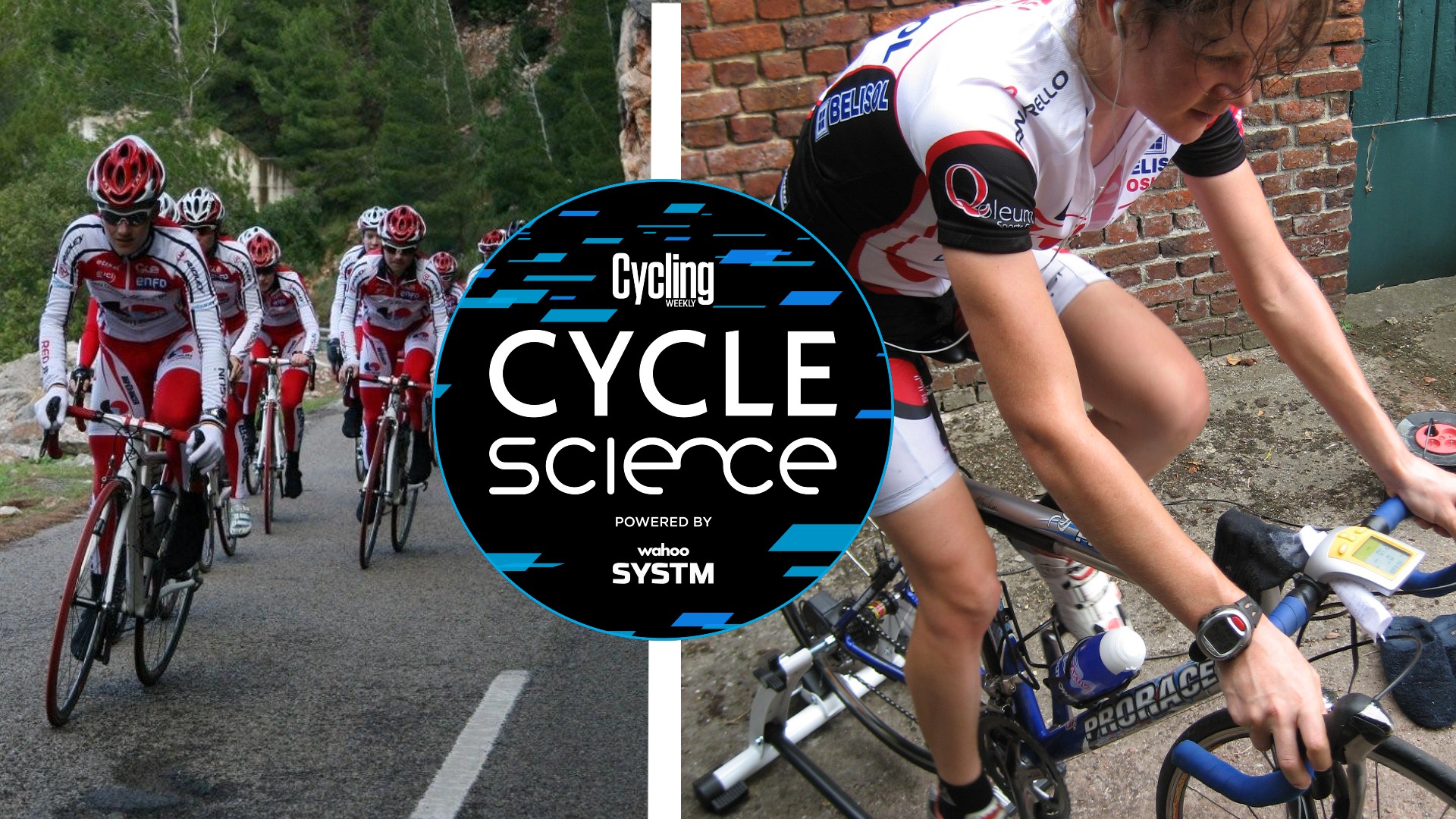
I frequently interact with a fellow cyclist on social media; I post a photo of where I’ve been on the road bike and Dave, a keen road racer, guesses where it is. I rarely catch him out; his knowledge is enviable. Recently, he turned the tables; he posted a photo and asked me to guess where he’d ridden. I shocked myself with the rote response, ‘the road to Castell de Castells’ [near Denia/Calpe]; it’s been over 10 years since I rode there.
The road in question is admittedly impressionable; long, gently winding uphill, lined with almond trees and orange groves. I was rarely focusing on my surroundings, but it had clearly stuck in my mind. I used the road for intervals and sprints, up and down it several times in one session. That was back in the noughties when all I did was ride my bike to race my bike, and when the outdoor resistance mimicry of the best smart trainers we now enjoy just didn’t exist.
Few have the luxury of a full day and warmer climes for training. Whether it’s a set of rollers or a turbo trainer, indoor cycling is undeniably more convenient than donning kit to hit the road, particularly during winter.
In praise of the indoors
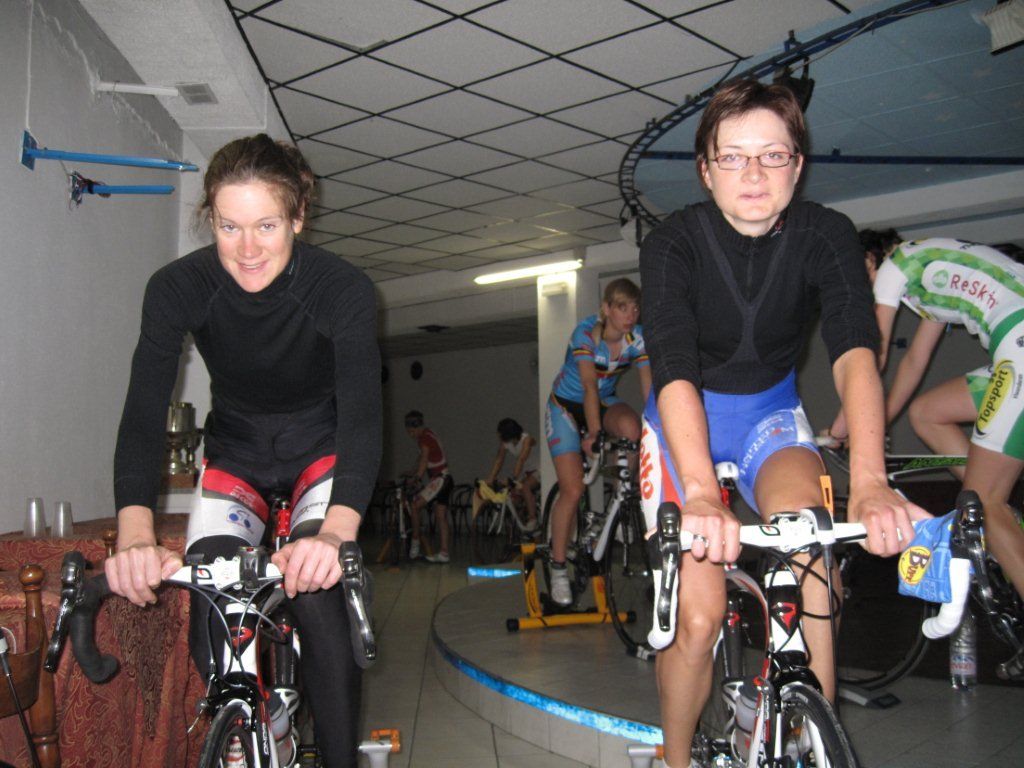
Emma warming up for Trofeo Alfredo Binda with Grace Verbeke
You can forget overshoes, winter gloves, endless layers, a waterproof jacket, post-ride bike and kit cleaning, bike lights for dull days or after work spins... the list goes on. An indoor session lends itself to family duties and work commitments. I have friends who fit in quality bike sessions while keeping an eye on their new-born. A warm-up or cool-down while dealing with a backlog of work emails certainly can’t be done on the road.
Even if the weather’s okay, the safety of your suffer-shed can have more appeal than the open road. Close passing, malicious manoeuvres and every second counts-driving can make the outdoors uninviting. Confidence on the road isn’t a given for everyone. Some people prefer the comfort and familiarity of their own home over pulling on Lycra to wait at endless red lights, navigate busy roundabouts or fly down descents at speeds that, quite frankly, scare them. Access to rural routes, quiet lanes or flatter terrain isn’t a luxury we all have.
If you are coming at it from a training perspective, a prescriptive session can be followed to a 'T' indoors. Timings and intensities for intervals are fully controllable, keeping an eye on parameters is a doddle, unlike outdoors. The endorphin rush is just as intense and hitting the numbers is addictive. The consistency of effort achievable indoors is optimal training for time-triallers, or multi-sporters. Execution of training is formal and predictable, tracking progress is simple and accurate. Many GPS devices are now able to convert road rides into virtual ones. You don’t have to ride Ventoux as preparation for a local event, you can simulate the exact route on your smart trainer.
In short, when it's spent indoors, every second on the bike counts; no lights, no traffic, no swerving for pot holes, no junctions, no mechanicals, no stressed motorists…
How on earth can training outdoors beat this…?
The benefits of getting outside
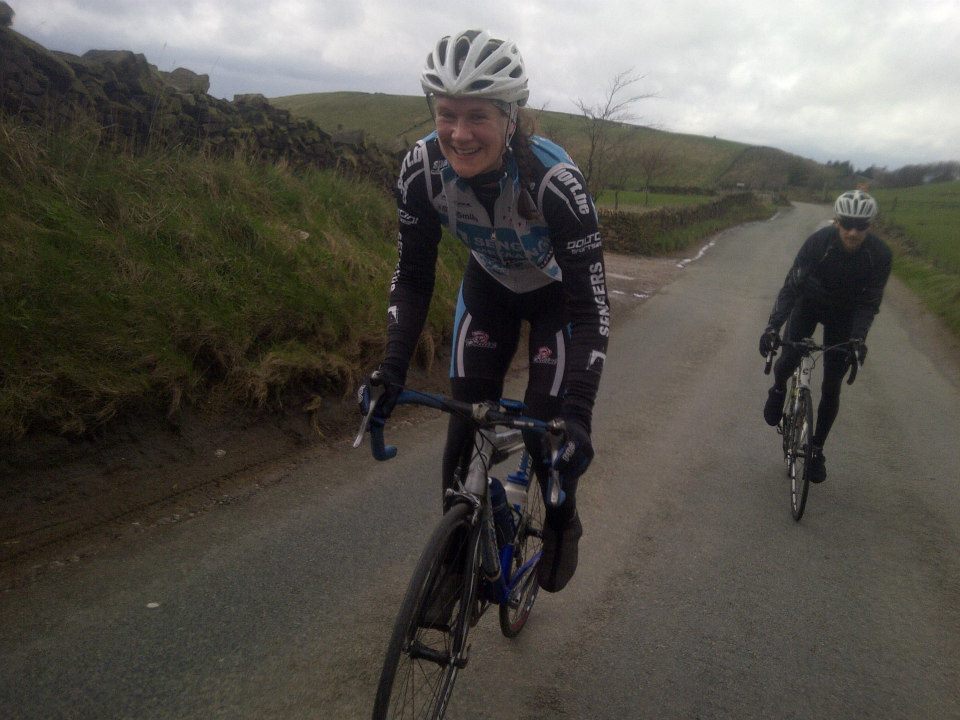
Even when the weather is grim, outdoors is fun
In my pro days, a turbo trainer was something we warmed up on for time trials, or a tool to maintain fitness when we’d broken a bone. In fact, rollers were preferable to turbos; they engage the core, promote balanced pedalling and improve handling skills. A static bike won’t do any of this.
Indeed, a static trainer doesn’t engage the core muscles required to endure hour after hour in the saddle, on a real road. Given a prescriptive session, I’d find a suitable road and ride up and down it, several times if necessary. I learned to judge my efforts on gradients that were constantly varying, without relying on stats in front of me. I’d U-turn and race down twisting descents, feeling the bike under me and appreciating what it could do, how the tyres gripped in dry and wet conditions and sense feedback from road surfaces. Virtually all my training for road racing was done outside; if snow fell or ice formed, a mountain bike was unhooked- the change was welcomed; it injected a whole load of fresh fun into training.
Group rides were an inherent part of training; touching bars, riding within centimetres of team mates’ wheels and building trust in others - in a group you learn to be very aware of everything going on around you, a requirement of the peloton. Throw in some good conversation, playful chasing up hills and classic sign sprints and training was all wrapped up without formal intervals.
I would invariably achieve new records during group rides; you’ll never push yourself like someone else will push you. If you happen to be training for a road race, they are unpredictable, group riding on the road prepares you for this this perfectly.
Some of my best friendships have been formed out on the road, in the physical presence of fellow cyclists. Don’t overlook the mental benefit of being in nature with good company, especially after we’ve just lived through a global pandemic and, to varying degrees, experienced confinement and social restrictions affecting the mental health of millions.
The cherry on the top of riding outdoors is the wind in your face and the exposure to the elements; fresh air and vitamin D simply can’t be obtained indoors. It might not be for everyone but, in my opinion, fast is most definitely more fun outside.
The bottom line? Both have their place
If Strava had existed in the noughties, I’m sure I’d have been ‘local legend’ of the ‘Castell de Castells Road’. I may have ridden up and down the same roads countless times, but every ride was different; nature changes. Four walls and a ceiling won’t.
However, life is hectic and indoor training is undeniably the most efficient and effective option, certainly where quality, upper-end intervals are concerned. If your goals are outdoors though, don’t forget the importance of doing the real thing, or the mental benefits on offer.
Cycling Weekly created this content as part of a paid partnership with Wahoo. The contents of this article are entirely independent and solely reflect the editorial opinion of Cycling Weekly. Wahoo is celebrating its new app, Wahoo SYSTM, try it for free for 14 days.

Thank you for reading 20 articles this month* Join now for unlimited access
Enjoy your first month for just £1 / $1 / €1
*Read 5 free articles per month without a subscription

Join now for unlimited access
Try first month for just £1 / $1 / €1
Get The Leadout Newsletter
The latest race content, interviews, features, reviews and expert buying guides, direct to your inbox!
Emma’s first encounters with a bike were in between swimming and running. Soon after competing for GB in the World Age Group Triathlon Championships in Edmonton in 2001 she saw the light and decided to focus on cycling.
With a couple of half decent UK road seasons under her belt, she went out to Belgium to sample the racing there, spending two years with Lotto-Belisol Ladies team, racing alongside the likes of Sara Carrigan, Grace Verbeke, Rochelle Gilmore and Lizzie Deignan. Emma moved from Lotto-Belisol to Dutch team Redsun, working primarily as a domestique for Emma Johansson. When Redsun folded, Emma was offered the opportunity to ride with a newly formed Belgian team and home to the first year senior and budding rider Anna Van Der Breggen.
After retiring, Emma returned to teaching, setting up her own tutoring business. When not coercing kids to do maths, she is invariably out on two wheels. While the road bike remains her true passion, she has also developed an addiction to touring, with destinations including Iceland, Georgia and Albania, to mention just a few. There have also been sightings of Emma off-road, on mountain and gravel bikes… As if all of this isn't enough, she's been working as a freelancer since 2005, testing and reviewing the latest kit and sharing her insight into the sport.
-
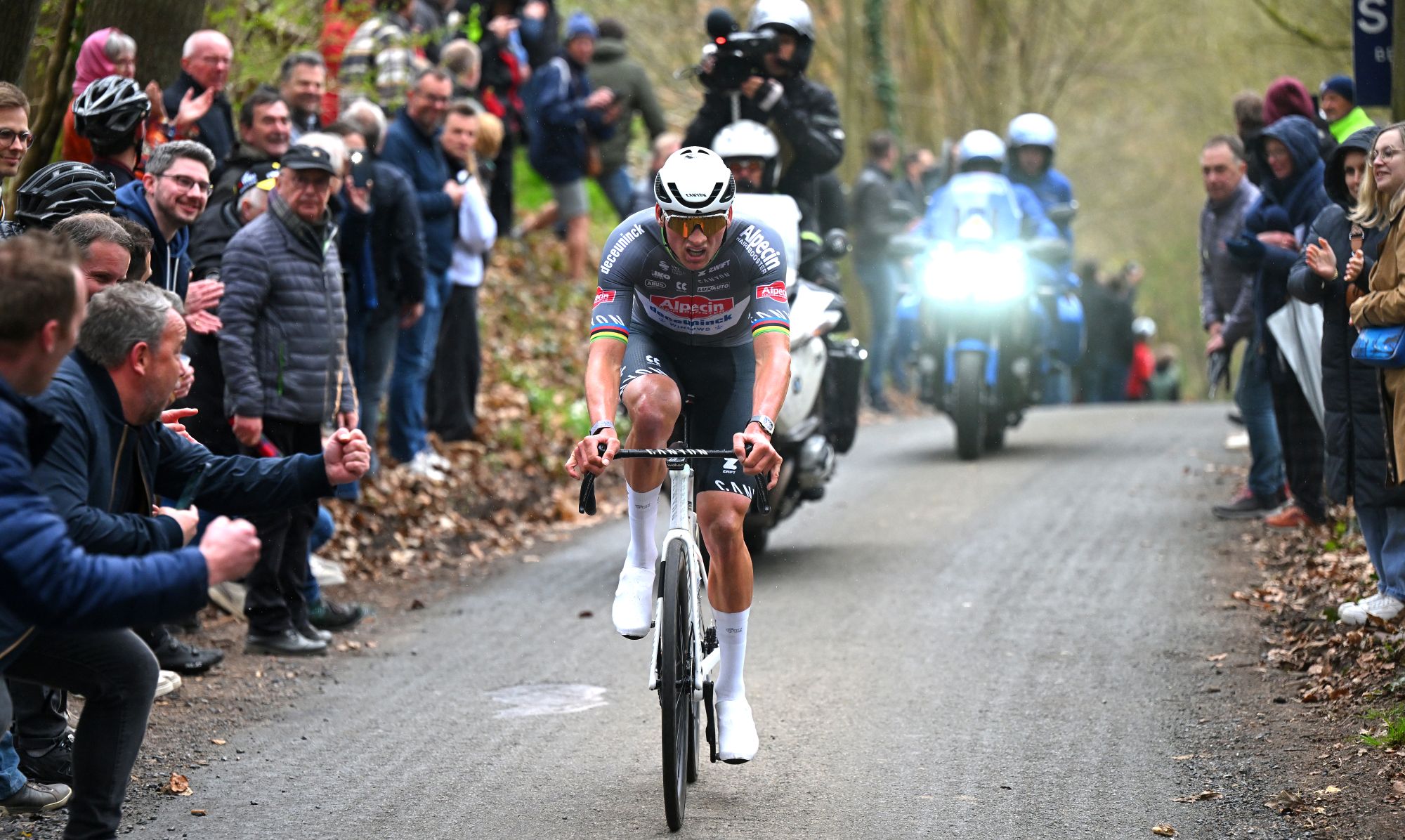 'I start every race to win' - Mathieu van der Poel fired up ahead of Paris-Roubaix showdown with Tadej Pogačar
'I start every race to win' - Mathieu van der Poel fired up ahead of Paris-Roubaix showdown with Tadej PogačarTwo-time winner says he has suffered with illness during spring Classics campaign
By Tom Thewlis Published
-
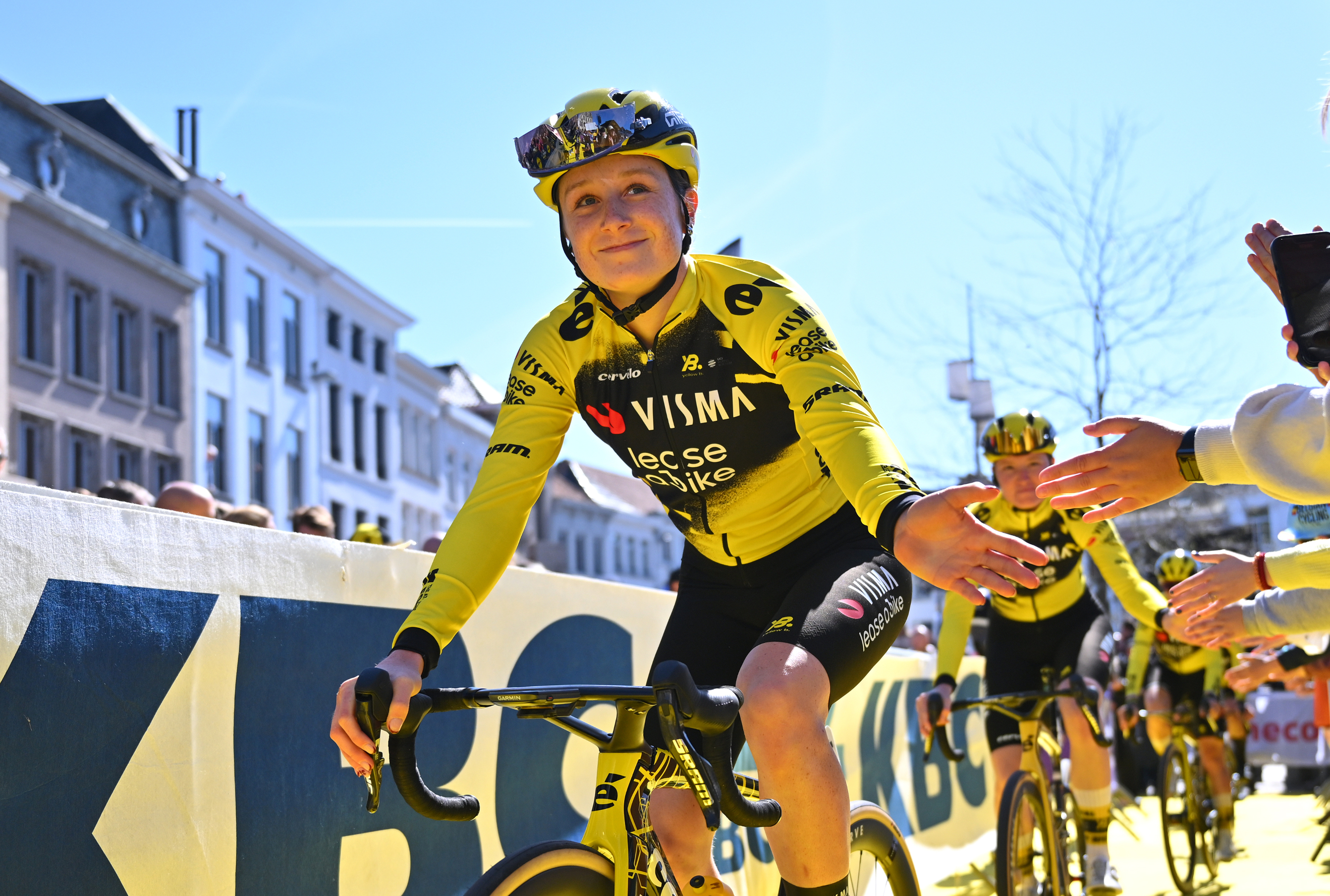 'It's really surreal that now I'm part of it' - 19-year-old Imogen Wolff set to go from spectator to racer at Paris-Roubaix
'It's really surreal that now I'm part of it' - 19-year-old Imogen Wolff set to go from spectator to racer at Paris-RoubaixBrit first came to see the 'Hell of the North' when she was six
By Tom Davidson Published